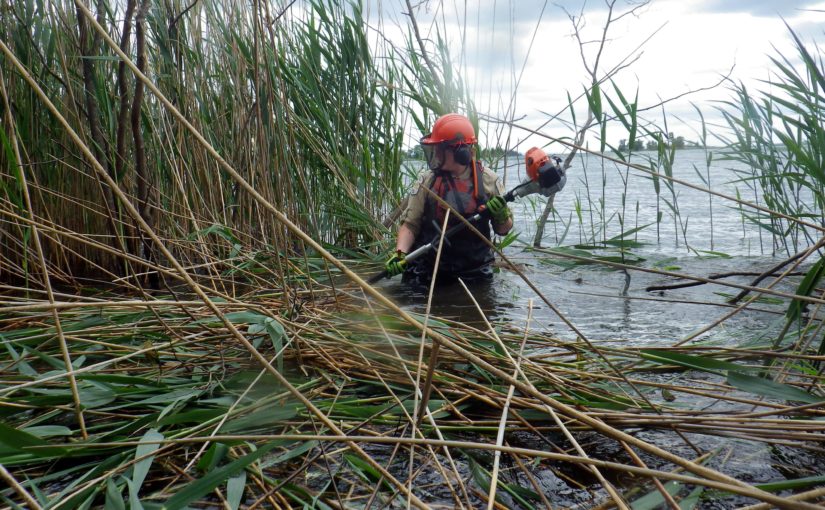Today’s post comes from Rebecca Rogge, a travelling resource steward for the Northeast Zone.
I first started working for the Northeast Zone Resource Steward Program back in 2011. It seems like a lifetime ago.
At the time, it was a relatively new job in Ontario Parks. The program had only been around for a few years, and few of us existed.
Several parks were created in 1999, the majority of which were “non-operating” provincial parks. They generally do not have facilities or dedicated staff. Many protect recreational waterways and nature reserves protect rare flora, fauna and geological landscapes.
This is where we, the resource stewards, spend most of our time. In these wonderfully beautiful and diverse places.
So what is it that we do?
Resource stewards are like roving park wardens. Occasionally student rangers, who travel from park to park, come with us too. We document, map, provide education and enforce the rules in these largely undeveloped places.

We are the eyes and ears of the park managers and the “boots on the ground.”
In the Northeast Zone, we can be working anywhere from Muskoka to James Bay, from the Quebec border to Lake Superior. It is a challenging job as we are somewhere new almost every day.
It takes time to get to know these places: from reading management plans, looking at maps, talking with superintendents, planners, and ecologists. So many moving pieces.
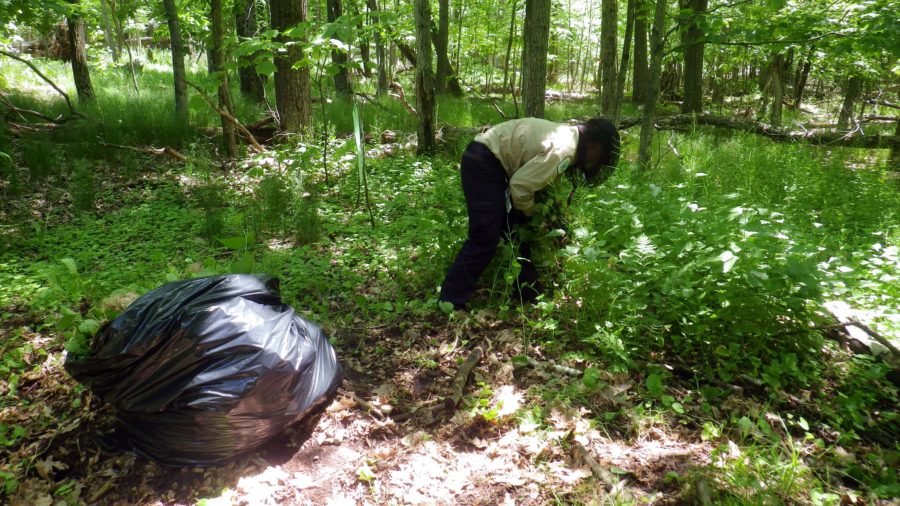
All this being said, it is very rewarding. We get to see much of what Ontario Parks has to offer and experience. We do a range of things including:
- installing species at risk fencing
- clearing portages
- mapping campsites and trails
- removing invasive plants

Given the remoteness of the places we work, we need to be self-reliant and well-prepared. Today I might take a canoe to work, tomorrow an ATV, the next week a train or an aircraft.
Highlight reel
Some memorable moments in my career as a resource steward include rescuing an exhausted fawn from drowning and helping several lost hikers and canoeists. These were some of the most rewarding.
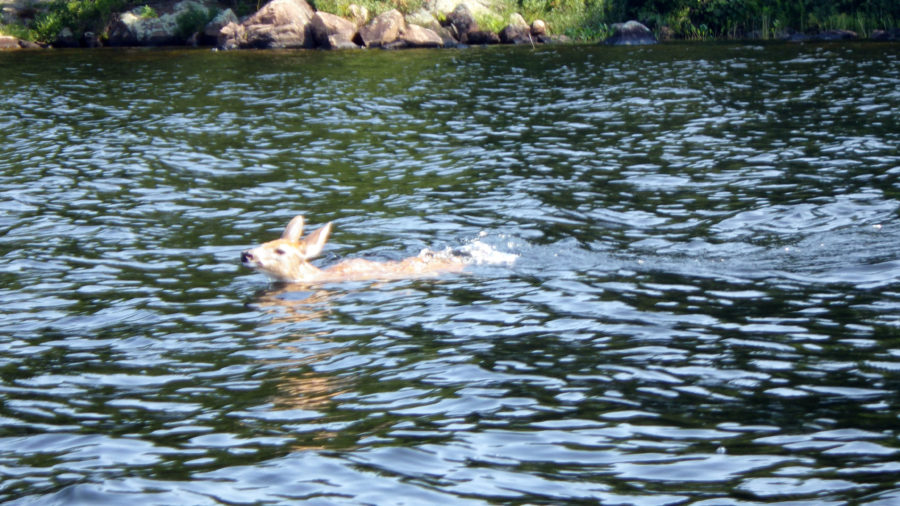
I have cleared trails in remote parks after a storm blocked many of the portages, and I have completed a train-in canoe trip down the Missinaibi River (our longest provincial park and a designated Canadian Heritage River).
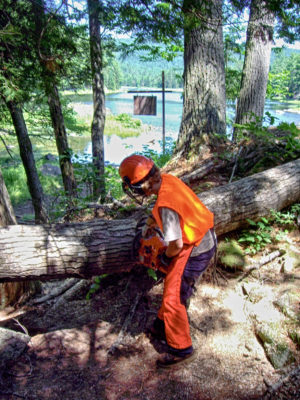
In my second season, a note was left on my truck at a pre-arranged garbage drop warning me to watch the skies as a storm warning was in effect. Just as I finished clearing the Talon Chutes Portage for the upcoming Mattawa River Canoe Race, a storm let loose and my partner and I took shelter while trees around us and the rain made it nearly impossible to see.
Ten minutes later, the storm blew past, leaving us again to clear more fallen trees off the toughest portage on this historic fur trade route.
Most memorable moment
More recently my colleagues and I aided fire crews in putting out forest fires at Noganosh Lake Provincial Park caused by abandoned campfires. We collected the crew from a helicopter landing on the side of the highway and boated them and their equipment out to the site.
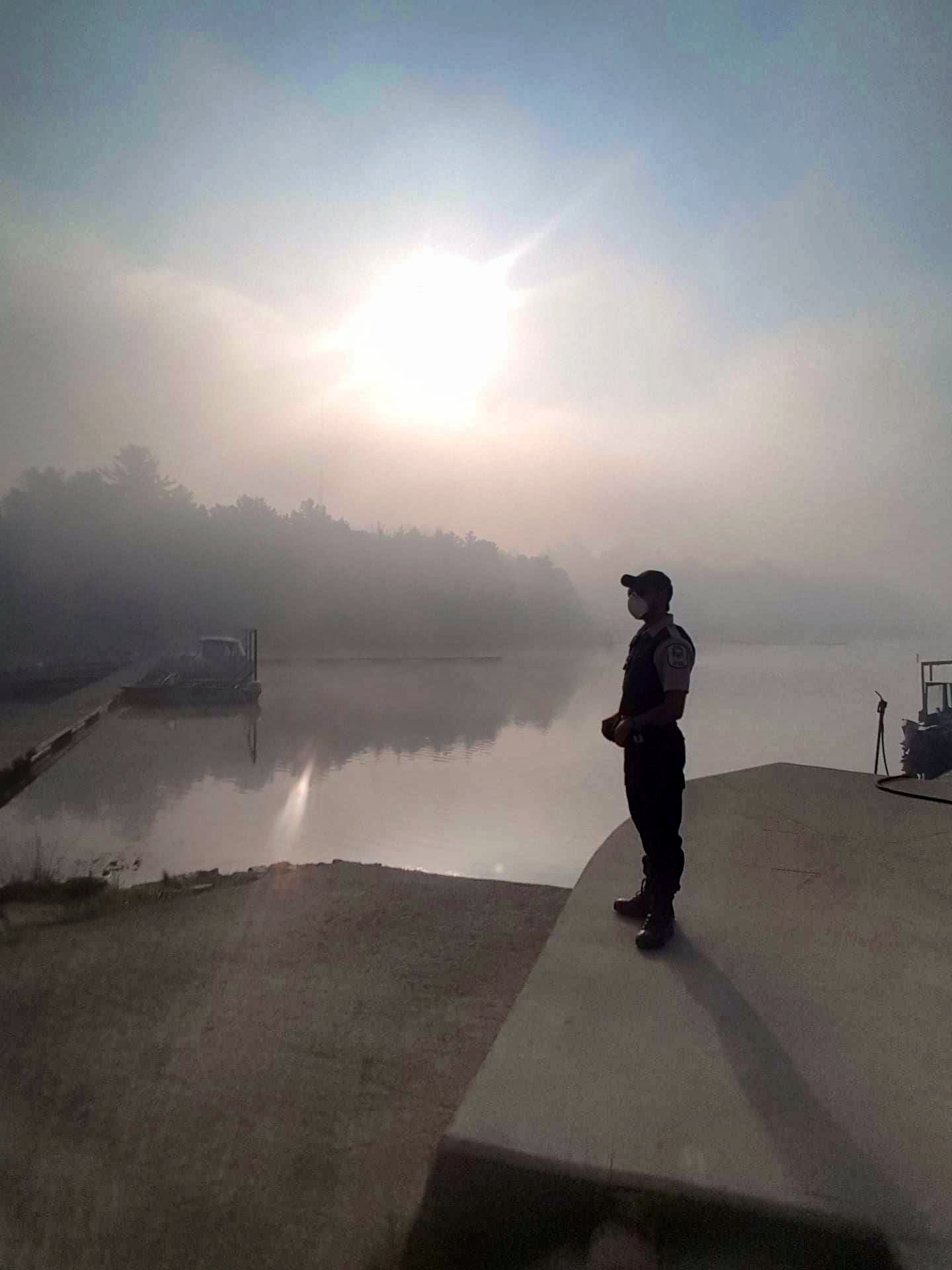
Just last season, my colleagues and I assisted in ensuring public safety during the Parry Sound 33 forest fire near the French River, making sure closed roads near the fire stayed closed.
The plan this year
This season, a student and I will be doing a lot of work assessing and removing invasive species in our parks. These plants are the ones responsible for reducing biodiversity in these special places.

Oh, the places you’ll go
Since we began in 2007, the Resource Steward Program has changed a lot.
We are no longer only a handful of individuals in an unknown position in the northeast. Now resource stewards are found in other regions of Ontario Parks.
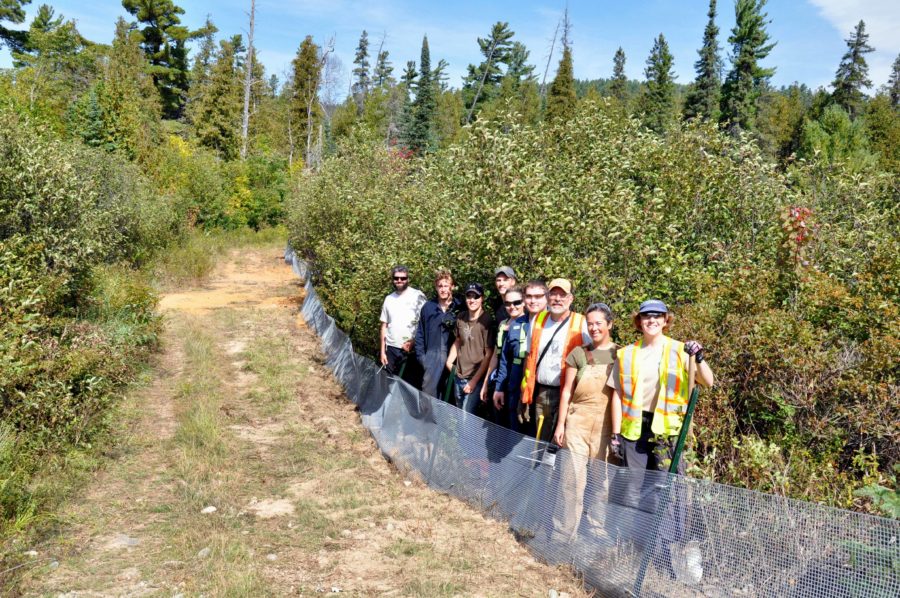
Over the years many of my colleagues have gone on to be planners, conservation officers, and park superintendents.
Next time you see us in the field, feel free to come to say hi and find out a little more about what we are doing in the area.
